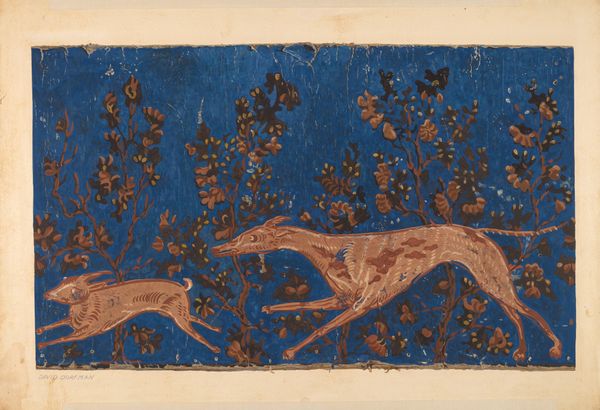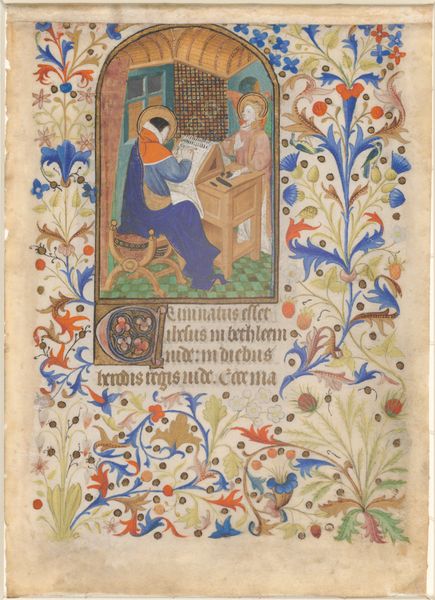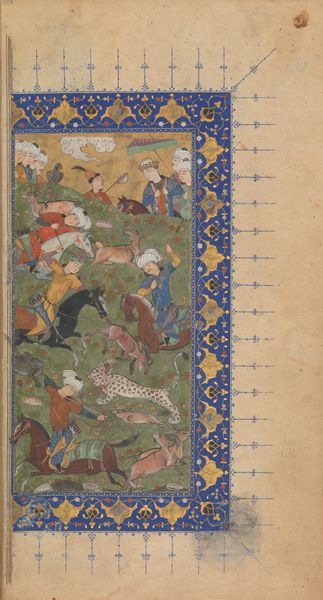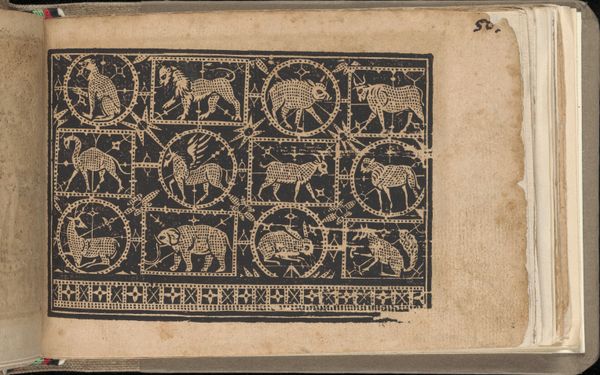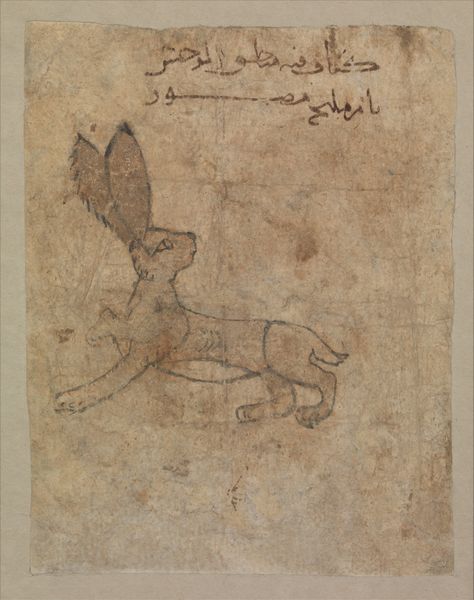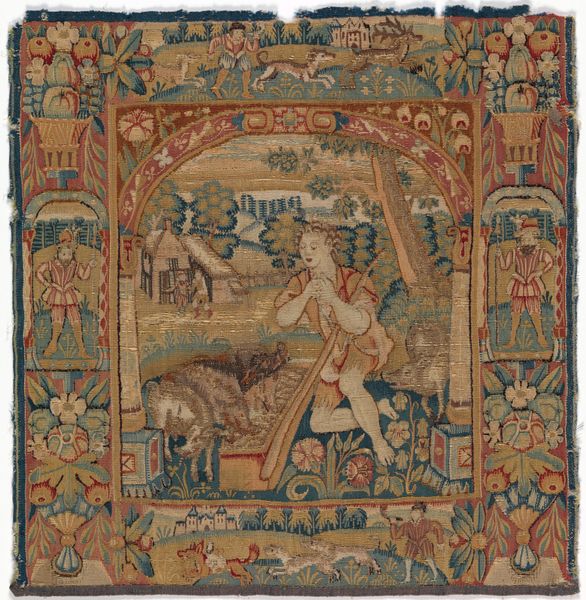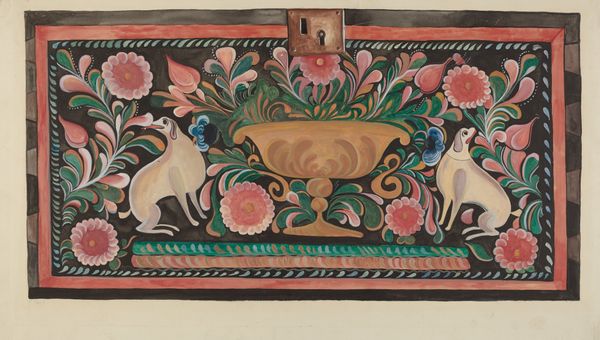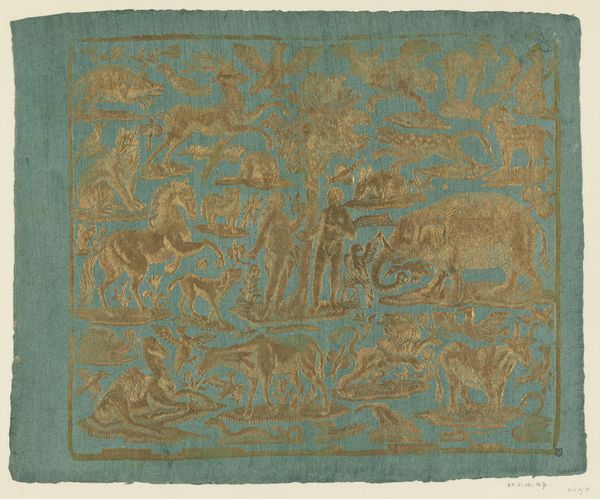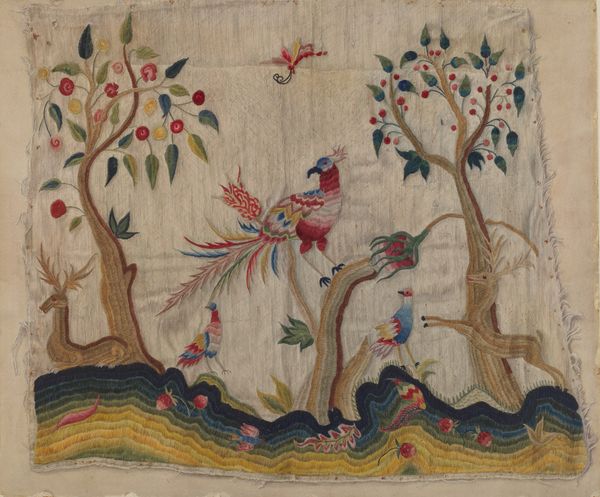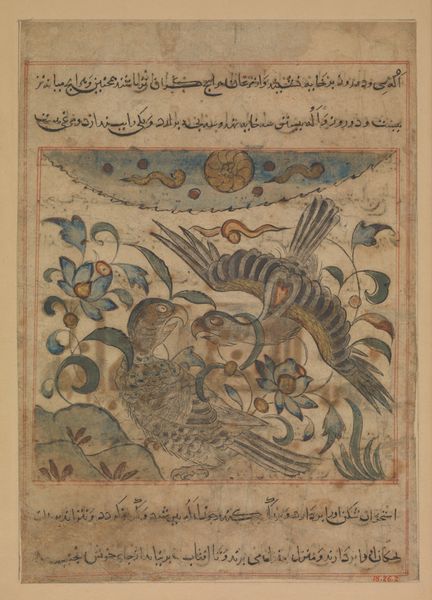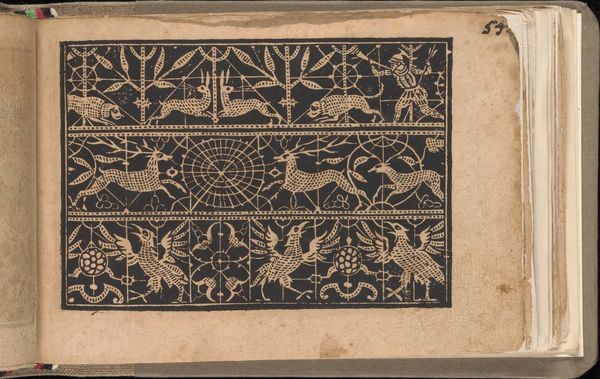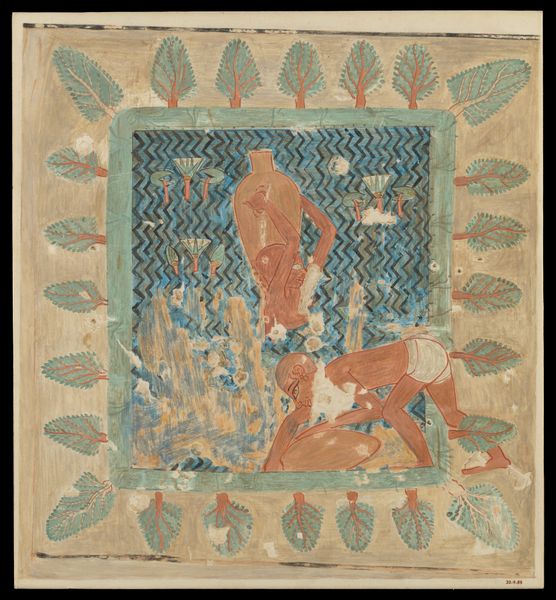
" A Lion", Folio from a Dispersed Nuzhatnama-i ‘Ala’i of Shahmardan ibn Abi’l Khayr 1600 - 1625
0:00
0:00
painting, watercolor
#
painting
#
landscape
#
figuration
#
watercolor
#
islamic-art
#
miniature
Dimensions: Page: H. 3 in. (7.6 cm) W. 4 1/8in. (10.5cm) Mat: H. 14 1/4 in. (36.2 cm) W. 19 1/4 in. (48.9 cm) Frame: H. 16 3/4 in. (42.5 cm) W. 21 3/4 in. (55.2 cm)
Copyright: Public Domain
Editor: So, this is "A Lion" from a dispersed Nuzhatnama-i 'Ala'i, dating back to around 1600-1625. It's attributed to Shahmardan ibn Abi 'l Khayr and is currently held at the Met. It's a watercolor painting on what looks like paper. I’m struck by the stylized plants; they seem almost decorative around the lion. What jumps out to you about it? Curator: Well, considering the time period and the presumed function within a manuscript, I'm most drawn to the materials used and their sourcing. Watercolor on paper indicates a certain level of access to both pigment production and paper-making techniques. Were these locally sourced, or traded commodities? How did this impact artistic choices? Editor: That’s interesting. I hadn’t thought about it in terms of materials. So, the type of pigment might tell us something about trade routes or local resources? Curator: Precisely. The consistency of the pigment, its binding agent—these are clues to understanding the artist's workshop practices, patronage, and access to international markets. Moreover, the paper itself. Analyzing its fiber content and method of production could illuminate regional variations in craft and resource management. The writing above the lion is essential to understand too. Editor: So, you're seeing it as not just an image but an object rooted in a network of labor and resource exchange? Curator: Absolutely. The art isn't created in a vacuum. By investigating the paper production, the pigment acquisition and creation, we are getting a view into social and economic systems, shifting the focus from the image of a lion as just symbolic representation to an examination of artistic creation's material conditions. Editor: That makes me rethink my initial reaction. It's less about the "scene" depicted and more about the socio-economic forces involved in the art’s creation. I'll definitely keep this in mind moving forward. Curator: Exactly. That's materiality in action – thinking about art as part of production and consumption, not just something 'beautiful.'
Comments
No comments
Be the first to comment and join the conversation on the ultimate creative platform.
